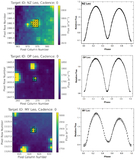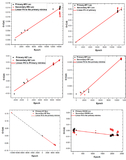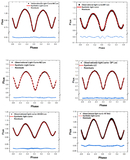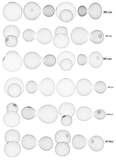Image Details
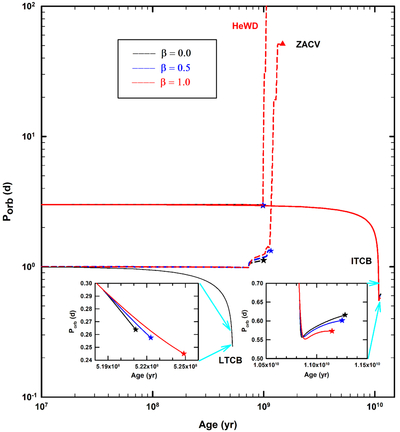
Caption: Figure 8.
Evolution of potential progenitor binaries for contact binary systems in the orbital period–age (Porb−t) plane. The solid lines show the evolution of primordial binaries that have initial masses of 1.0 and 0.8 M⊙ and the dashed lines correspond to initial masses of 2.0 and 1.8 M⊙. The black, blue, and red curves correspond to cases for which β = 0 (conservative mass transfer), 0.5, and 1 (completely nonconservative mass transfer), respectively. The initial orbital periods are either 1 or 3 days (as can be inferred from the graph). The black, blue, and red stars denote the endpoints at which the tracks produce a contact binary. Note that the red triangle corresponds to a ZACV with an initial period of 51 days. The other red-dashed vertical line leads to the creation of another ZACV containing a Helium White Dwarf with a period of 131 days. Depending on the initial conditions, LTCB systems, intermediate temperature contact binaries (ITCB) systems, or β Lyrae binaries can be produced. Note that two insets are used to delineate the Porbs of the LTCB and ITCB systems.
Copyright and Terms & Conditions
© 2025. The Author(s). Published by the American Astronomical Society.


